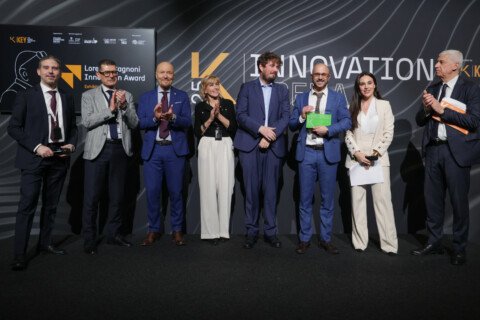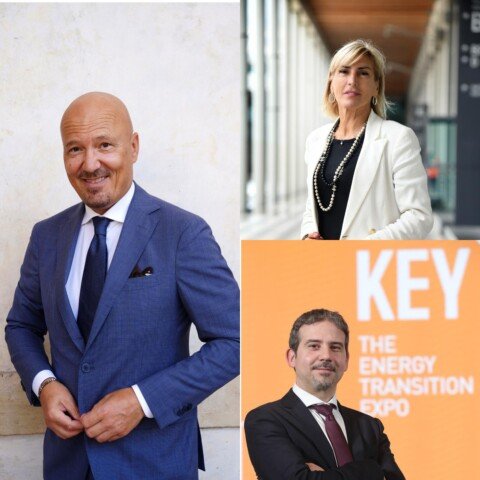By Saida Zemzemi:
What are healthy lifestyles and how can an individual have a quality of life to be happy?
Finland is one of the oldest countries that have bet on these goals to become in the first ranks at the level of the happiest and most prosperous people. This is not a compliment, but a fact we sought out during our recent visit to Helsinki, the capital of Finland.
While we were strolling through its verdant gardens, many questions arise about the quality of life in Finland, the foundations of sustainable development, the circular economy, and the marketing patterns to other countries such as Tunisia.
Here is an interview with His Excellency Ambassador of Finland to Tunisia Mr Pekka Hukka.
1) If we describe the quality of life in Finland?
Finland is a democratic market-oriented country with a strong social conscience, high institutional trust and safety. In a Nordic welfare state, with a good track record in equality aspiration including gender equality (Finland was the first country to grant full political rights to women in 1906), quality of life is in general good.
However, we were not born that way. Looking back in history, Finland has been independent (only) since 1917, 105 years this coming December. Hundred years ago, we were still a very poor agrarian nation with forests as the only natural resource. Civil war and the Second World War did not make it easier, but rebuilding our country after the losses in the war was something that brought people together and contributed to our feeling of national unity.
Industrialization, balancing between western orientation and strong trade with Russia helped us to develop towards the Nordic model together with our closest and natural friends, the other Nordic countries. Development is always a long process, which requires constant effort, hard work and stamina to keep on working for your goals. Learning from mistakes will be evitable.
Fortunately, Finland has been able to join forces for a consensus at times of crisis and has been able to make also difficult decisions. We even have a word to describe our determination in hardship – Sisu is a unique Finnish term that can be roughly translated into English as strength of will, determination, perseverance, and acting rationally in the face of adversity.
Also, Finland has been ranked to top positions in several indexes measuring the quality of life, UN Human development, education, the status of women and happiness. We have been awarded the world’s happiest country for the fifth year in a row – I think the main factor contributing to happiness is trust. Our life is good as we have trust; trust towards our leaders, trust towards our institutions (judiciary, police, tax authorities, teachers, doctors, social protection) and the society as such. A general sense is that we are treated equally in good times and bad times.
2) On what basis does the environmental approach focus?
Again starting from history, Finland is geographically a big country; however, we are some 5.5 m inhabitants. There is a lot of nature – more than 75 % of the land area is covered by forest, 10 % by water.
The use of natural resources has been the key to our economic growth, value addition, machines, engineering, and new technologies such as Nokia phones and now Nokia networks. Moving to innovation and experimenting – success and failures
Using natural resources became a problem in 1960 with the expansion of pulp and paper products.
Awakening to preserving the environment is further innovation for producing added value and producing more uses and more resources.
Focus on globalization and understanding that this cannot be sustainable.
Measures are needed to tackle that the Sustainable Growth Program for Finland supports the growth that is ecologically, socially and economically sustainable.
Climate changes need further measures. There is a need to reduce the use of fossil fuels and resort to carbon neutrality. We all have made commitments, including Finland and Tunisia. Finland aims to be the first carbon-neutral industrialized country by 2035 which is a heavy task. A lot of changes are needed including in heating, transport use of energy in the industry – as currently, our usage of global resources exceeds our share due to demanding climate and landscape. FI Contribution, heating…
In preventing climate change, the reduction of greenhouse gas emissions alone is not enough. The extra carbon dioxide in the atmosphere must also be stored back in the soil. As a carbon sink, forests and their preservation are crucial tools for fighting climate change. One growing concern, in general as well concerning forests, is the loss of biodiversity.
Change of mindset, change in thinking; do we need to use all the time fresh natural resources; Absolutely not. There is the concept of circular economy, recycling, reusing, and using the same raw materials several times, in all fields of life; Circular economy solutions are needed to safeguard biodiversity and solve the climate crisis. Finnish “roadmap” to a circular economy 2016-2025 was the world’s first national roadmap to a circular economy.
Finland’s waste policy aims to promote the sustainable use of natural resources and to ensure that waste does not endanger human health or harm the environment.
3) Is there an intention to market your environmental experience? How? ‘Or’ What?
Two ways on that: policy and practice:
On policy; Finland is among the eager advocates and promoters of sustainable development in global forums – we believe in targets and efforts to reach them: Global targets as well as individual national targets and programs, burden-sharing, support mechanisms etc, but we don’t really like free-riders.
In practice: Our efforts to combat climate change are based on market mechanisms. Finland is very good with machines and quite good with innovation and consultation, in other words, technical solutions. We are getting better at providing comprehensive solutions, but we need partners. And we need to get better in marketing. A part of our concrete efforts is also supporting those who need support, development cooperation, technical support, capacity building, and financing – mostly through a global mechanism, Green fund etc, but also facilitating the private sector participation in joint efforts.
We have several interesting companies showcasing Finland’s most inspiring examples of the circular economy.
4) For Tunisia, there is a dynamic initiative of cooperation and environmental collaboration.
Tunisia and Finland have excellent relations. I have to say that they are a bit then at the moment. There are fewer contacts between the countries after the pandemic. Trade continues but on lower levels. Work on the environment, climate change and circular economy should be based on market mechanisms supported by the right regulatory framework focused on transition.
As to the development cooperation, Finland operates on several regional projects, on gender, decent jobs, and migrants, usually with a UN agency or an International Financing Institution (WB, EIB and EBRD) and governments. There is no bilateral cooperation program as such between Tunisia and Finland.
A few examples; Finland is financing a program called HIPCA (High Impact Partnership on Climate Action) with the EBRD with a €50m investment for a climate program in North Africa Region. On the circular economy, Finland is working with the African Development Bank on a program targeting at the moment 8 countries (not Tunisia – yet) on capacity enhancements.
Finland is among the founders and the Chair of the Coalition of Finance Ministers for Climate Action, which brings together fiscal and economic policymakers from over 70 countries in leading the global climate response and in securing a just transition toward low-carbon resilient development. Tunisia could be a member of that coalition and join the dialogue and peer-to-peer support of the Ministers of Finance from more than 70 countries.
For Tunisia
- A rather small economy changes possible
- Reform agenda in the front, i.e. public utilities, subsidies etc. It should be used to redirect the efforts towards new ways. No return to the old way. There are needs in reform and also in thinking.
- Several concerns, such as; water scarcity; raising sea levels, pollution, Sahara creeping closer, loss of biodiversity, energy, and use of renewable energy – which need to buy diesel or gas for heating and cooling with wind and sun available throughout the year?
- Easy opportunities “low hanging fruits” – trash collection and recycling, construction business, textile business.





